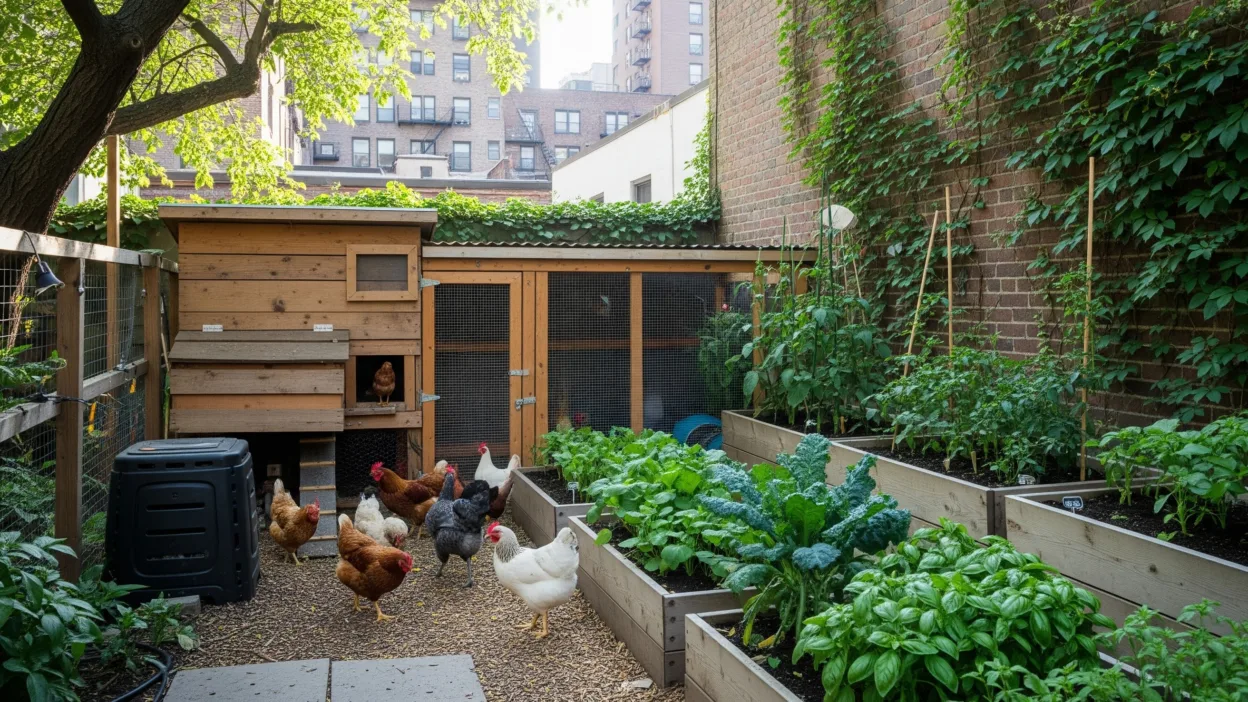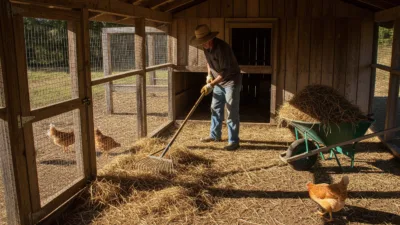Urban homesteading has become one of the fastest-growing trends among city dwellers. More people are turning their backyards into productive spaces where chickens, vegetables, and herbs thrive together. One unique way urban chicken keepers share this lifestyle is through urban homestead chicken tours. These tours let you showcase your chickens, coops, gardens, and self-sufficient practices to neighbors, schools, and even local organizations.
If you have been raising chickens in your backyard and want to share the joy with others, hosting a chicken tour is both rewarding and educational. In this guide, we’ll walk through everything you need to know to plan, prepare, and host a successful event that inspires others while keeping your flock safe.
Why Host an Urban Chicken Tour?
Hosting a backyard chicken tour has multiple benefits:
- Community Education: Many urban residents are curious about chickens but have never seen them up close. Your tour helps demystify backyard chicken keeping.
- Promoting Sustainability: Show how chickens reduce food waste, supply organic fertilizer, and provide fresh eggs.
- Networking With Like-Minded People: You may inspire others in your area to start homesteading, building a supportive local community.
- Advocating for Urban Chickens: Some cities are still hesitant to allow chickens. Public tours highlight the benefits and responsible practices of chicken keeping.
- Pride and Joy: Let’s be honest, showing off your flock and coop is fun.
Step 1: Planning Your Chicken Tour
Before you announce your tour, careful planning ensures a smooth experience.
- Pick the Right Date and Time
Choose a day when your chickens are usually active and the weather is favorable. Late spring or early fall works well since your yard will look vibrant and comfortable. - Decide on the Audience
Is your chicken tour open to the public, neighbors only, or school groups? The size of the group determines how much space you’ll need and how long the event should last. - Create a Tour Flow
Plan the areas visitors will see:- The chicken coop and run
- Nesting boxes and egg collection process
- Feed and water stations
- Compost or manure management
- Garden beds if you integrate chickens into gardening
- Set Clear Rules
To protect your chickens, set ground rules like no outside pets, no chasing chickens, and supervised handling only.
Step 2: Preparing Your Homestead
Your chickens and coop should look their best on the day of the tour.
- Deep Clean the Coop: Remove old bedding, clean nesting boxes, and refresh the run.
- Provide Fresh Water and Feed: Full feeders and clean waterers demonstrate good care.
- Beautify the Yard: Trim grass, tidy garden beds, and set up seating if needed.
- Health Check Your Chickens: Make sure they’re free from visible issues like mites or injuries before guests arrive.
This preparation not only improves visitor experience but also reflects responsible chicken keeping.
Step 3: Educating Visitors
Your chicken tour should be informative and engaging. Prepare to answer common questions like:
- How many eggs do chickens lay?
- What do you feed your hens?
- How do you keep predators away?
- Do chickens smell?
- Is keeping chickens legal in the city?
You can also prepare a few mini-presentations:
- Egg Collecting Demo: Show how to gather eggs from the nest boxes.
- Feeding Time: Let visitors scatter scratch grains so they can interact with the chickens.
- Composting with Manure: Explain how chicken waste turns into rich fertilizer.
Adding visual aids like posters or small info cards with chicken facts makes the experience memorable.
Step 4: Safety for Chickens and Visitors
A successful tour balances fun with safety:
- Supervision: Always accompany guests into chicken areas.
- Limit Handling: If you allow guests to hold chickens, supervise carefully to avoid stress or injury.
- Hand Washing Station: Provide sanitizer or a sink so guests can clean up afterward.
- Limit Tour Size: Too many people can overwhelm both chickens and visitors.
Step 5: Promoting Your Chicken Tour
If you want more than just your neighbors, promote your event:
- Local Facebook Groups: Share with community gardening or homesteading groups.
- Flyers at Farmers’ Markets: Attract people already interested in fresh food.
- Homestead or Chicken Networks: Some cities organize annual Urban Farm Tours, and you can register your home.
- Event Platforms: List it on free platforms like Eventbrite for wider reach.
Make sure your event title is keyword-friendly.
Step 6: Enhancing the Experience
You can make your tour even more engaging by adding extras:
- Egg Sampling: Offer scrambled eggs or baked goods made with your hens’ eggs.
- DIY Coop Tips: Display photos of your coop-building process.
- Homestead Products: If you sell eggs, herbal soaps, or compost, this is a great chance to showcase them.
- Photo Opportunities: Create a small spot where families can take pictures with your chickens.
Common Mistakes to Avoid
- Overcrowding: Too many people at once stresses chickens. Use small groups.
- Not Setting Rules: Visitors may chase or try to pick up chickens unless you give clear instructions.
- Forgetting Permits: Some cities require permits for public events. Double-check local rules.
- Poor Sanitation: Skipping hand-washing stations may cause health concerns.
Hosting an urban homestead chicken tour is more than just showing off your backyard flock, it’s a chance to inspire and educate others about sustainability, food independence, and the joy of keeping chickens in the city. With careful planning, safety measures, and a welcoming spirit, you can turn your small rental backyard or urban homestead into an educational hub for your community.
Whether you invite a few neighbors or organize a public event, your chicken tour can spark new conversations about local food, urban farming, and sustainable living.
So clean up the coop, get your hens ready, and open your gates, your chickens might just become the stars of the neighborhood.



